Vinews
No. 5 — April 22, 2019
Contents:
- Managing Drosphila spp. and Insecticide Stewardship
- Phenology from Friday, April 19 in the Hermann Area
- Cumulative Growing Degree Days for the Seven Grape Growing Regions of Missouri from April 1 to April 22, 2019
Managing Drosphila spp. and Insecticide Stewardship
To minimize the risk of fruit flies developing resistance: What should you do?
From last week’s ViNews, there were some questions about what are some of the options for managing fruit flies in the sour rot complex. In this report, I will address those questions.
At this time, Drosphila spp. have not been confirmed to be resistant to any insecticides in Missouri. However, the cane berry industry which includes blackberries and raspberries are also reliant on insecticides to manage Drosphila spp. This increases selection pressure on the Drosphila spp. populations and increases the chances for selecting for insecticide resistant variants of Drosphila spp.
As I mentioned in last week’s report, the insecticide resistant Drosphila population from New York is cross resistant to Assail IRAC group 4 (neonicotinoids), Malathion IRAC group 1B (organophosphates) and Mustang Maxx IRAC group 3A (pyrethroids/pyrethrins). Past research has shown that Drosphila strains overexpressing the cytochrome P450 gene Cyp12d1 are cross resistant to a broad range of chemical classes of insecticides, including pyrethrins IRAC group 3A, neonicotinoids IRAC group 4A, organophosphates IRAC group 1B and growth regulators IRAC group 15 (ffrench-Constant et al. 2004).
Question 1. Would Sevin, FRAC 1A be effective in controlling fruit flies?
The insecticide Sevin (carbaryl) IRAC group 1A has limited efficacy on spotted wing drosophila, Drosphila suzukii (Van Timmeren and Isaacs, 2013) this suggests that
Question 2. Would Admire Pro IRAC 4A be effective against fruit flies?
Admire Pro contains the active ingredient imidacloprid. Imidacloprid is the most used insecticide in the world. There has been research conducted in Australia suggesting that fruit flies in temperate regions of Australia have greater resistance to imidacloprid than fruit flies from tropical regions of Australia. The authors suggest that fruit flies exposed to climate extremes in temperate regions are more prone to evolve insecticide resistance than fruit flies in more tropical regions (Fournier-Level et al. 2019). Admire Pro is in the same IRAC group as Assail. In New York State the fruit fly population has developed resistance to Assail as reported in last week’s ViNews report.
Question 3. Would Entrust IRAC group 5 be effective for fruit fly control?
The insecticides Delegate and Entrust are both IRAC group 5. Entrust is OMRI approved organic insecticide whereas Delegate is not. Both of these products provide excellent control of Drosphila spp. The label states not to apply more than two consecutive applications of IRAC group 5 insecticides (Delegate and Entrust). Not more than 19.5 oz of Delegate WG can be applied per acre per year and the number of applications are restricted to 5. For more information see the Delegate WG label.
Question 4. Does resistance to one chemical in an IRAC group result in other chemicals within that IRAC group also being ineffective?
Insecticides within an IRAC group usually share a common target site within a pest. Often when resistance develops it is the result of a modification to the target site. Modification to a target site is a genetic modification. The modification of the target site usually results in the insecticide being unable a bond to the target site, thereby making the insecticide ineffective. Since insecticides within an IRAC group have a common mode of action, cross-resistance can develop to other insecticides within the IRAC group. However, cross resistance can also occur among different IRAC groups. In insecticide resistant insects this often occurs when metabolism of insecticides is the result of a P450 monooxegenase.
Insecticide Resistance: What Can You Do
- Prevention should be your priority to avoid insecticide resistance. As a broader integrated pest management program, you should also include a resistance management program (RMP). One concept of a RMP is to rotate applications of insecticides from different chemical classes. Use insecticides with different modes of action. Apply insecticide “A” and alternate to insecticide “B” for the next control period. Select insecticides that have different IRAC codes that have activity on the target pest. For example if Mustang Maxx is applied, IRAC group 3A, this should be followed by an insecticide other than Baythroid 3A, Brigade 3A or Danitol 3A. You must rotate insecticides that have different IRAC codes.
- Target pest populations should be monitored prior to applying a management program and after a management program is implemented. Scout the grapevines prior to applying an insecticide and scout the grapevines after the REI period has expired. Be keenly aware that the pest is present prior to the insecticide application and that the pest in being controlled from the insecticide application.
- Some insecticides will degrade if the water carrier pH is alkaline. Alkaline water has a pH value greater than 7. Both carbamate and organophosphate insecticides can undergo alkaline hydrolysis that results in reducing the insecticides effectiveness. A number of factors including the chemical properties of the insecticide, the pH of the water and the length of time the insecticide is in contact with the water impact how fast the insecticide breaks down. As an example the half-life of malathion is 8-days at pH 6, 3-days at pH 7 and 19-hours at pH 8. To lower water carrier pH, adjuvants can be added to the water carrier. For most pesticides the optimum pH range is between 5.5 to 6.5. Similar to malathion, the optimum pH for Assail is between 5 to 6. Many water sources in Missouri have pH values between 7 and 9.
- Consider applying insecticides that are harmful to bees late in the evenings when bees are not foraging on flowering weeds on the vineyard floor. Malathion, Assail, Delegate, and Mustang Maxx are toxic to bees.
References cited
ffrench-Constant, R., P. J. Daborn and G. Le Goff. 2004. The genetics and genomics of insecticide resistance. Trends in Genetics 20:163-170.
Fournier-Level, A., R. T. Good, S. A. Wilcox, R. V. Rane, M. Schiffer, W. Chen, P. Battlay, T. Perry, P. Batterham, A. A. Hoffman, and C. Robin. 2019. The spread of resistance to imidacloprid is restricted by thermotolerance in natural populations of Drosophila melanogaster. Nature Ecology and Evolution 3:647-656.
Van Timmeren S. and R. Isaacs. 2013. Control of spotted wing drosphila, Drosphila suzukii, by specific insecticides and by conventional and organic crop protection programs. Crop Protection 54:126-133.
Phenology from Friday, April 19 in the Hermann Area
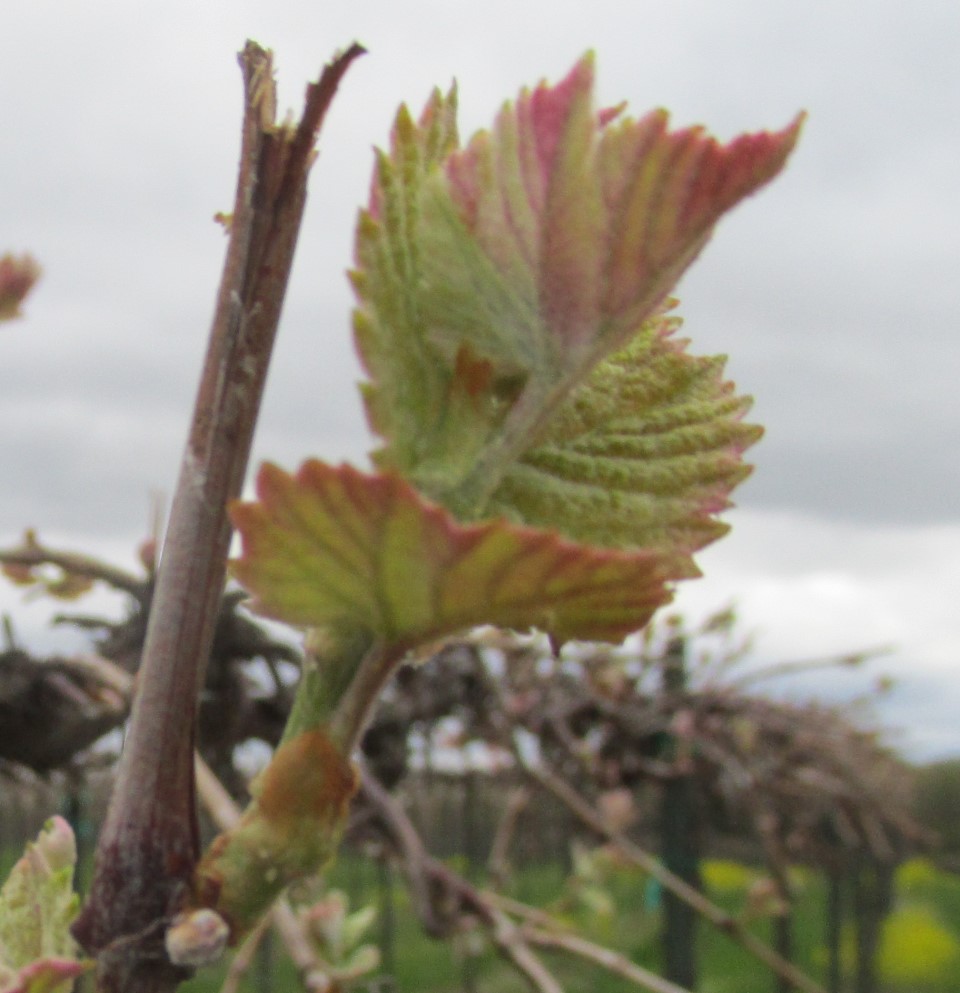
Catawba
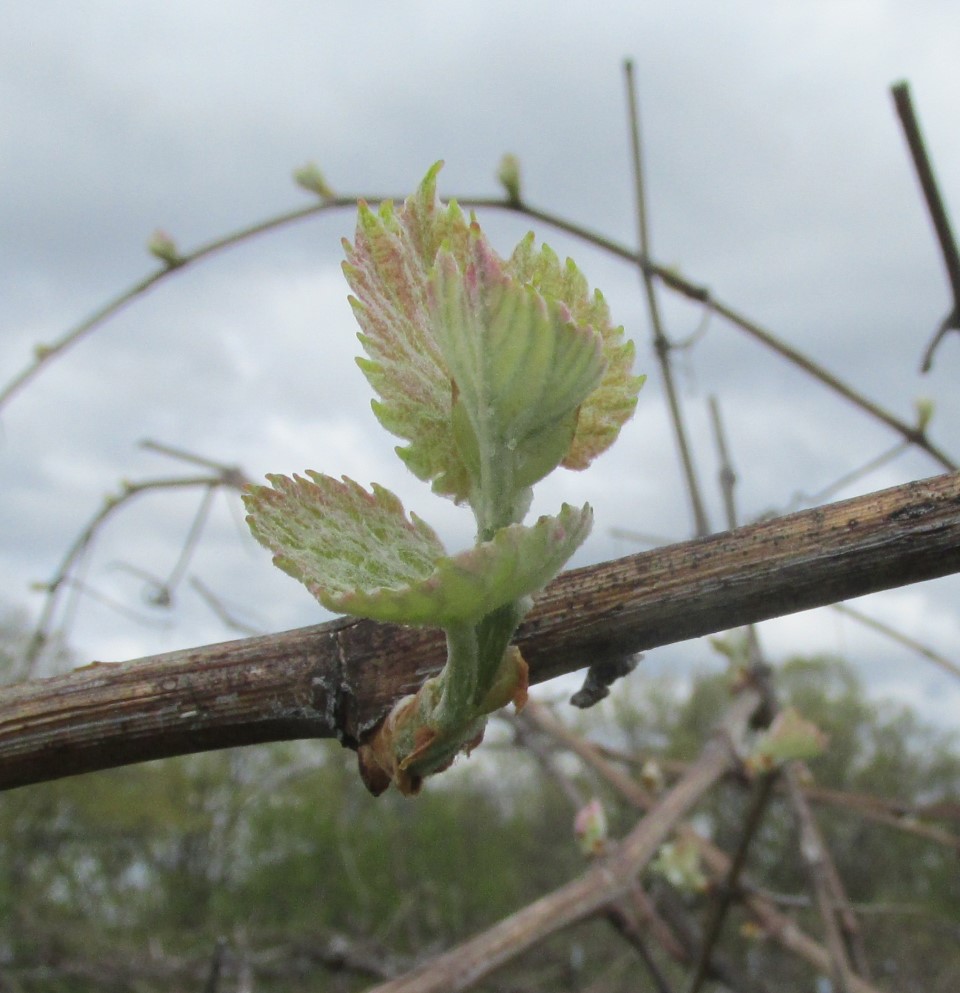
Cayuga
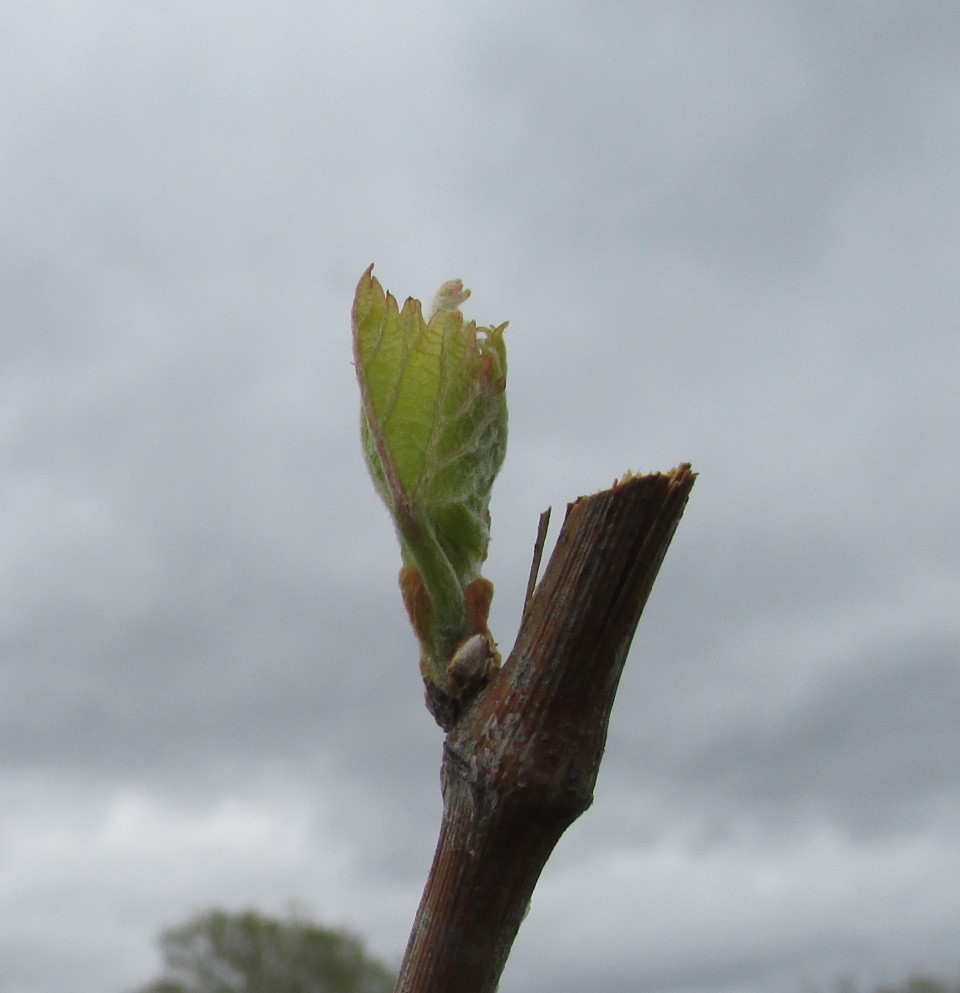
Chambourcin
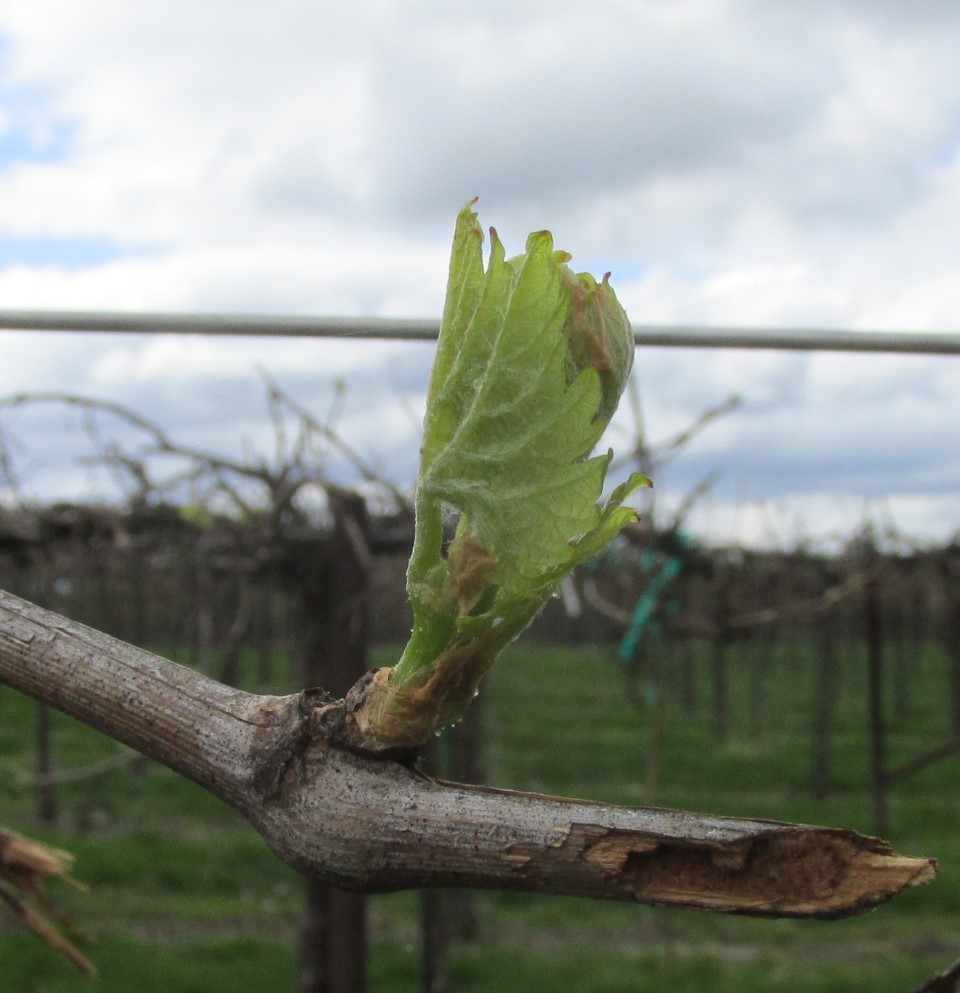
Chardonel

Norton

Valvin muscat
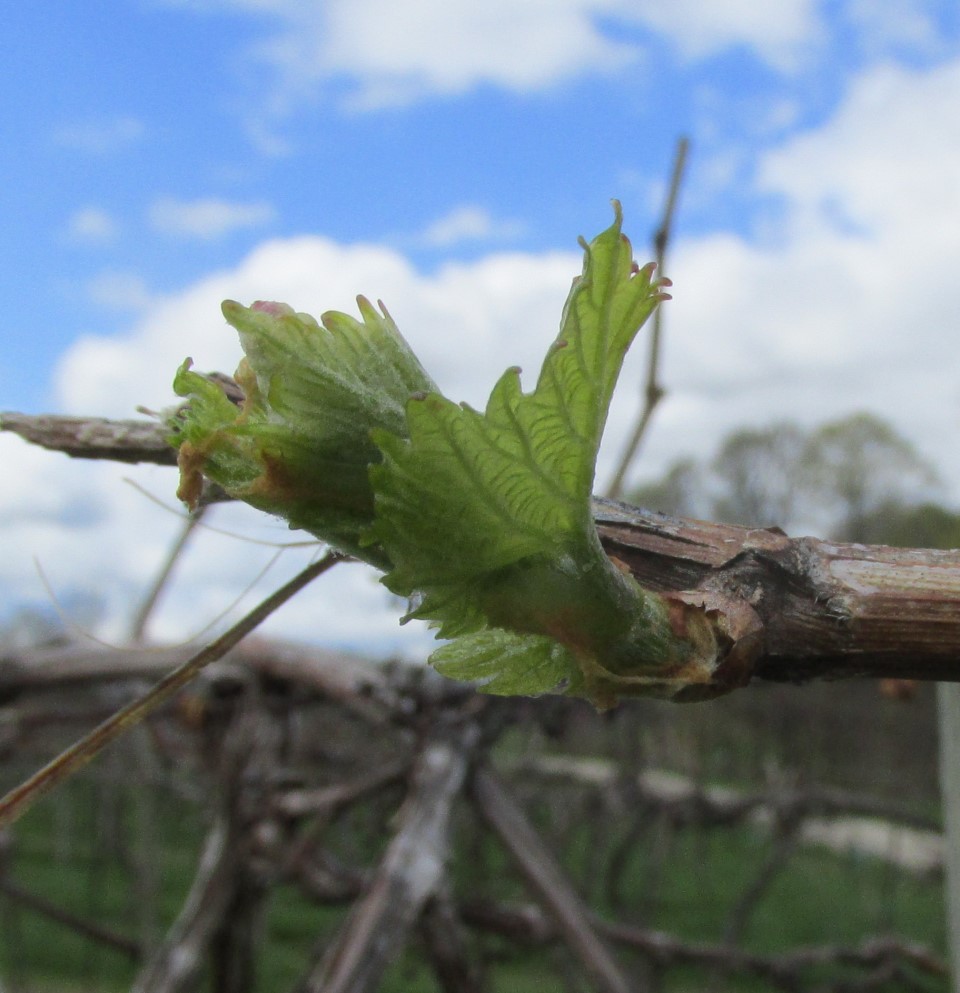
Vidal blanc

Vignoles
Cumulative Growing Degree Days for the Seven Grape Growing Regions of Missouri from April 1 to April 22, 2019
| Region | Location by County | Growing Degree Days1 | ||
|---|---|---|---|---|
| 2019 | 2018 | 30-year Average | ||
| Augusta | St. Charles | 195 | 110 | 182 |
| Hermann | Gasconade | 198 | 113 | 184 |
| Ozark Highland | Phelps | 214 | 126 | 196 |
| Ozark Mountain | Lawrence | 208 | 133 | 191 |
| Southeast | Ste. Genevieve | 197 | 120 | 196 |
| Central |
Boone | 195 | 94 | 171 |
| Western | Ray | 188 | 81 | 162 |
1 Growing degree days at base 50 from April 1 to April 22, 2019. Data compiled from Useful and Useable at https://mygeohub.org/groups/u2u/tools. Click on link below to determine growing degree days in your area.
To determine the number of growing degree days accumulated in your area since April 1, use this tool.